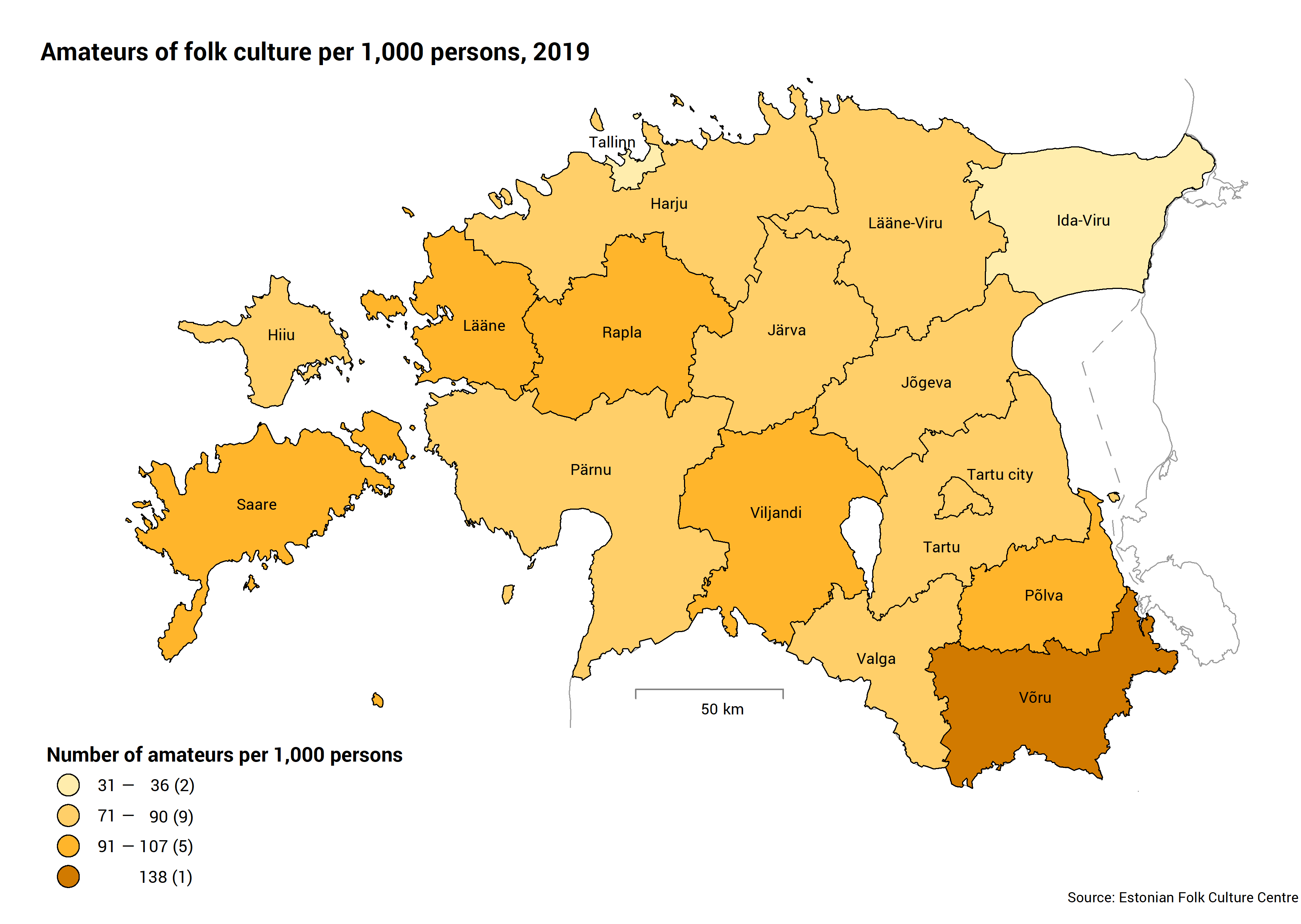Last year, 59,000 amateurs sang in choirs and danced in folk groups
37,300 people participated in choirs and 21,700 practiced folk dancing. Amateur theatre, handicrafts, vocal music (bands, singing clubs), brass music, folklore and folk music were less popular.
Compared to ten years ago, the number of folk culture amateurs in Estonia has grown by 6,000 persons. In 2014, folk culture amateurs numbered 90,000, but after the Song and Dance Celebration of the same year the number decreased slightly. The decline was steeper after the 2017 Youth Song and Dance Celebration.
Per thousand persons, the highest number of folk culture amateurs was in Võru county, followed by Lääne, Põlva, Viljandi and Saare counties. The numbers were smallest in Ida-Viru county and Tallinn.

Profile of a folk culture amateur in 2019
- 59% of folk culture amateurs were children or youth. Their share was largest in choirs, amateur theatre and folk dancing groups and smallest in handicraft clubs and folklore groups.
- 70% of amateurs of folk culture were females. Their share was largest in handicraft clubs, vocal groups and singing clubs, and folklore groups, while it was smallest in brass orchestras and bands.
- 94.5% of amateurs of folk culture participated in Estonian groups. In groups of other national origins, there were over 1,700 choir singers, 500 amateur actors and nearly 460 folk dancers.
Data on folk culture are collected by the Estonian Folk Culture Centre. Statistics Estonia uses the data to perform the statistical activity “Amateur Cultural Activities” for the Ministry of Culture.
An amateur of folk culture is a person who participates or is active in folk culture, practices in one’s free time and outside his or her main job, and usually does not do this for a living. In addition to amateurs participating in groups, amateurs active on one’s own (e.g. craftsmen with professional certificates) are covered. The population includes permanent folk culture groups and their participants; however, project-based groups that are active during the project period or for less than one season are not included.